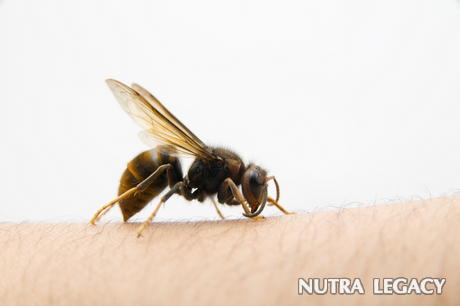Using Bee Products as Bee Sting Treatment: Possible?

- Some bee sting treatments also treat allergies
- You may want to have yourself or your children to get an allergy testing before summertime when bees are the most likely to sting because an allergic reaction to a bee sting can be very dangerous
Every spring and summer, bee bites, or stings, increase as the pollination process begins for another season. Although bee bites are not normally harmful, having a good way to treat them is important, especially if you have children. One treatment answer some have wondered about is bee products, such as honey and royal jelly.
Do Bee Products Treat Bee Bites?
Actually, most medical experts do not recommend using bee products to treat stings from any type of bee. Although these products may be helpful for other problems, the best course of action is to follow some sound medical advice.
Most physicians suggest removing the stinger as quickly as possible, and you want to remove the entire stinger. If a dark dot remains under the skin, you have not done this. Apply meat tenderizer combined with four parts water to the affected area. Meat tenderizer includes an enzyme that can break down the protein found in the venom. Wash away the combination before 30 minutes has passed. Following that, it’s a good idea to apply cold to the area, such as an ice pack, for up to 30 minutes.
There are a number of over-the-counter medications you can use to help relieve the discomfort. Antihistamines, calamine lotion, hydrocortisone, and acetaminophen can all be used or taken to deal with bee bites or stings.
The Use of Bee Products
While bee products may not be useful in treating bee bites, they do have other uses in the health community. The process is sometimes referred to as apitherapy, which involves the use of bee products including honey, royal jelly, pollen, and venom, for medicinal healing purposes. Most people recognize that honey is a good way to ease the pain of a sore throat, but practitioners of apitherapy go even further. For example, some suggest that bee venom can be used to treat multiple sclerosis. With this treatment method, venom is injected into the sufferer either by actual bees or through syringes.
Part of the reason for the belief that this treatment is effective comes from a study published in 2005. Only nine people participated in the study and a few of them did seem to benefit when bee venom was injected into their skin. However, future studies have not shown conclusive evidence that this is the case. Most medical professionals would not recommend this type of treatment nor do insurance companies cover it.
One area in which bee products may have real health benefits is the prevention of seasonal allergies. Some allergists will recommend taking a couple of tablespoons of honey, daily, a few months before the allergy season. The reason is that the honey contains pollen, and by adding pollen to your system you’ll build up your immune response so you can reduce or even avoid an allergic reaction when allergy season hits full swing.
The use of bee products to treat cholesterol and arthritis, however, may not be as effective. Studies haven’t shown conclusively that there is a connection between their use and any benefit to these sufferers.
The information supplied in this article is not to be considered as medical advice and is for educational purposes only.
|
One Response to “Using Bee Products as Bee Sting Treatment: Possible?” | ||||||||||||||





 25 Nov 2008
25 Nov 2008
In a way this makes a lot of sense. The medical community uses snake venom to make an anti-venom, so why not use bee products for a sting or other reaction?January 23rd, 2009 at 11:29 pm